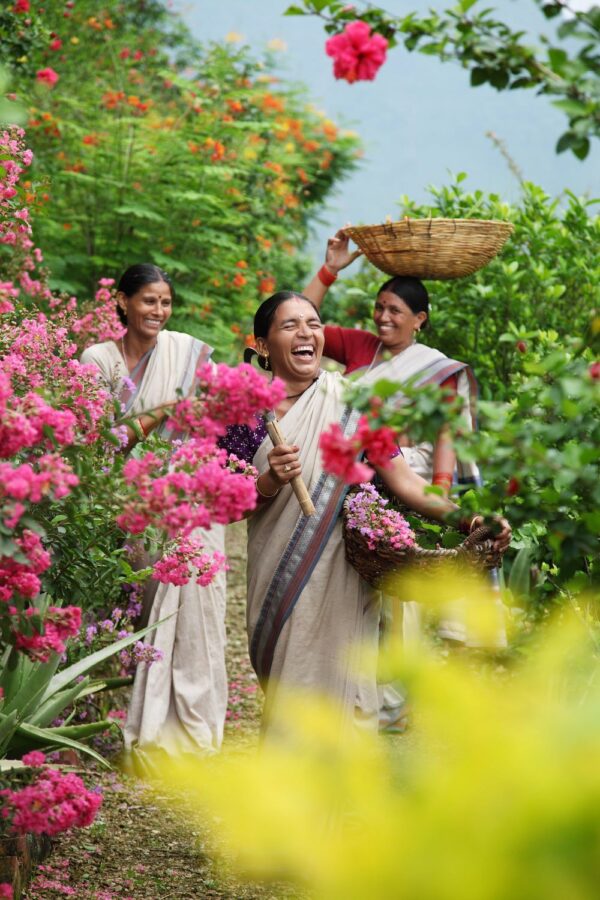Luxury and sport may once have seemed unlikely companions – one rooted in exclusivity, heritage and rarity, the other in mass culture, fandom and accessibility. Yet in recent years, these two worlds have collided in striking ways. Luxury brands are embracing sport not just as sponsorship, but as a powerful cultural stage, such as the Tiffany & Co.’s jewels sparkling under the Super Bowl spotlight.
At the heart of this lies the central paradox of luxury: to be desired by all, but attainable by few. Sport, with its global reach and passionate audiences, offers the perfect arena for cultivating desire.
From Elite Sports to Mass Fandom
Historically, luxury brands aligned themselves with elite sports – polo, sailing, tennis, golf. These associations mirrored their own codes of prestige, tradition and exclusivity. Chanel’s support of the Oxford–Cambridge Boat Race exemplifies this long-standing formula: aligning with heritage-rich events that exude rarity.
But the tide is turning. As Benjamin Voyer wrote in Forbes, luxury brands are now venturing beyond these rarefied circles into mass sports, from football to Formula 1. By doing so, they can command the attention of millions while still maintaining an aspirational edge. This shift is not dilution but amplification – ensuring luxury continues to dominate the cultural conversation.
Athletes as Authentic Ambassadors
One reason sport has become irresistible to luxury is the authenticity athletes bring. Kyle Smith, the NFL’s first-ever fashion editor, describes it simply: “anything an athlete does is so genuine.” Unlike traditional brand ambassadors, athletes embody dedication, performance and individuality – qualities that resonate deeply with younger audiences.
This authenticity allows luxury to connect with fandoms it might otherwise never reach. The NFL’s embrace of fashion, or the ATP Tour’s decision to style its top players in Ralph Lauren and Ferragamo ahead of the US Open, shows how sport can be a gateway into new cultural spaces.
Crucially, the rise of female athletes is opening up even more possibilities. Charlotte Tilbury’s partnership with the F1 Academy is a prime example: by supporting an all-female racing series, the brand positions itself not only within sport, but at the intersection of empowerment, inclusivity and glamour. With 40% of Formula 1 fans now female, these moves reflect a cultural and commercial shift.
Case Studies: Where Luxury Meets Sport
Tennis – The New Golf
Tennis has become fashion’s sport of choice, often described as “the new golf” but with added cultural momentum. Global stars such as Alcaraz and Musetti are now ambassadors for Louis Vuitton Louis Vuitton and Bottega Veneta. For brands, the sport offers aspirational characters, glamorous locations and storylines that travel far beyond the court.
Football and the NFL – Mass Reach, Luxury Moments
The Super Bowl has become a luxury showcase in itself. When Lamar performed in Celine jeans and Jon Batiste’s Tiffany jewels were spotlighted on live broadcast, LVMH stole the fashion headlines. Football may be the ultimate mass sport, but these luxury moments remind fans of the aspirational lifestyle surrounding it.
Formula 1 – High-Octane Glamour
Formula 1 continues to attract luxury partnerships, not only for its association with speed and spectacle, but also for its ability to reinvent itself. Collaborations like Charlotte Tilbury’s support of female drivers highlight how brands can merge luxury with progressive values in a sport that commands a global stage.
Beyond Sponsorship – The Wellness Shift
Luxury’s engagement with sport isn’t confined to high-profile sponsorship’s. Increasingly, brands are leaning into wellness and lifestyle. Celine’s Pilates collection and luxury ski equipment lines reflect a broader trend: health, balance and longevity have become new markers of luxury living. By entering these spaces, luxury ensures relevance in consumers’ everyday routines while maintaining its aspirational aura.
Sophie Lacoste’s Fulsalp is redefining how HNWIs dress, leveraging the shift in focus of a lifestyle that prioritises wellness, with performance-driven pieces that transition seamlessly from slope to city. Fusalp understands that for today’s HNW customers, status is increasingly expressed through vitality and balance.
The Future of Luxury and Sport
Looking ahead, the convergence of sport and luxury is only set to deepen. Expect more emphasis on female athletes, values-driven partnerships and culturally authentic moments that cut through fandoms worldwide. For Gen Z and Gen Alpha, there is no contradiction in loving both sport and fashion; luxury brands that embrace this fluidity will continue to win.
The challenge will be balance: harnessing the mass reach of sport without sacrificing exclusivity. But if done well, sport offers luxury the most powerful stage of all – one where desire is universal, but access remains scarce.
In this new arena, luxury isn’t just adorning athletes or sponsoring events. It is weaving itself into the very fabric of global sporting culture. And in doing so, it reinforces the timeless truth of its appeal: desired by all, attainable by few.
Luxury and sport may once have seemed unlikely companions – one rooted in exclusivity, heritage and rarity, the other in mass culture, fandom and accessibility. Yet in recent years, these two worlds have collided in striking ways. Luxury brands are embracing sport not just as sponsorship, but as a powerful cultural stage, such as the Tiffany & Co.’s jewels sparkling under the Super Bowl spotlight.
At the heart of this lies the central paradox of luxury: to be desired by all, but attainable by few. Sport, with its global reach and passionate audiences, offers the perfect arena for cultivating desire.
From Elite Sports to Mass Fandom
Historically, luxury brands aligned themselves with elite sports – polo, sailing, tennis, golf. These associations mirrored their own codes of prestige, tradition and exclusivity. Chanel’s support of the Oxford–Cambridge Boat Race exemplifies this long-standing formula: aligning with heritage-rich events that exude rarity.
But the tide is turning. As Benjamin Voyer wrote in Forbes, luxury brands are now venturing beyond these rarefied circles into mass sports, from football to Formula 1. By doing so, they can command the attention of millions while still maintaining an aspirational edge. This shift is not dilution but amplification – ensuring luxury continues to dominate the cultural conversation.
Athletes as Authentic Ambassadors
One reason sport has become irresistible to luxury is the authenticity athletes bring. Kyle Smith, the NFL’s first-ever fashion editor, describes it simply: “anything an athlete does is so genuine.” Unlike traditional brand ambassadors, athletes embody dedication, performance and individuality – qualities that resonate deeply with younger audiences.
This authenticity allows luxury to connect with fandoms it might otherwise never reach. The NFL’s embrace of fashion, or the ATP Tour’s decision to style its top players in Ralph Lauren and Ferragamo ahead of the US Open, shows how sport can be a gateway into new cultural spaces.
Crucially, the rise of female athletes is opening up even more possibilities. Charlotte Tilbury’s partnership with the F1 Academy is a prime example: by supporting an all-female racing series, the brand positions itself not only within sport, but at the intersection of empowerment, inclusivity and glamour. With 40% of Formula 1 fans now female, these moves reflect a cultural and commercial shift.
Case Studies: Where Luxury Meets Sport
Tennis – The New Golf
Tennis has become fashion’s sport of choice, often described as “the new golf” but with added cultural momentum. Global stars such as Alcaraz and Musetti are now ambassadors for Louis Vuitton Louis Vuitton and Bottega Veneta. For brands, the sport offers aspirational characters, glamorous locations and storylines that travel far beyond the court.
Football and the NFL – Mass Reach, Luxury Moments
The Super Bowl has become a luxury showcase in itself. When Lamar performed in Celine jeans and Jon Batiste’s Tiffany jewels were spotlighted on live broadcast, LVMH stole the fashion headlines. Football may be the ultimate mass sport, but these luxury moments remind fans of the aspirational lifestyle surrounding it.
Formula 1 – High-Octane Glamour
Formula 1 continues to attract luxury partnerships, not only for its association with speed and spectacle, but also for its ability to reinvent itself. Collaborations like Charlotte Tilbury’s support of female drivers highlight how brands can merge luxury with progressive values in a sport that commands a global stage.
Beyond Sponsorship – The Wellness Shift
Luxury’s engagement with sport isn’t confined to high-profile sponsorship’s. Increasingly, brands are leaning into wellness and lifestyle. Celine’s Pilates collection and luxury ski equipment lines reflect a broader trend: health, balance and longevity have become new markers of luxury living. By entering these spaces, luxury ensures relevance in consumers’ everyday routines while maintaining its aspirational aura.
Sophie Lacoste’s Fulsalp is redefining how HNWIs dress, leveraging the shift in focus of a lifestyle that prioritises wellness, with performance-driven pieces that transition seamlessly from slope to city. Fusalp understands that for today’s HNW customers, status is increasingly expressed through vitality and balance.
The Future of Luxury and Sport
Looking ahead, the convergence of sport and luxury is only set to deepen. Expect more emphasis on female athletes, values-driven partnerships and culturally authentic moments that cut through fandoms worldwide. For Gen Z and Gen Alpha, there is no contradiction in loving both sport and fashion; luxury brands that embrace this fluidity will continue to win.
The challenge will be balance: harnessing the mass reach of sport without sacrificing exclusivity. But if done well, sport offers luxury the most powerful stage of all – one where desire is universal, but access remains scarce.
In this new arena, luxury isn’t just adorning athletes or sponsoring events. It is weaving itself into the very fabric of global sporting culture. And in doing so, it reinforces the timeless truth of its appeal: desired by all, attainable by few.
Luxury and sport may once have seemed unlikely companions – one rooted in exclusivity, heritage and rarity, the other in mass culture, fandom and accessibility. Yet in recent years, these two worlds have collided in striking ways. Luxury brands are embracing sport not just as sponsorship, but as a powerful cultural stage, such as the Tiffany & Co.’s jewels sparkling under the Super Bowl spotlight.
At the heart of this lies the central paradox of luxury: to be desired by all, but attainable by few. Sport, with its global reach and passionate audiences, offers the perfect arena for cultivating desire.
From Elite Sports to Mass Fandom
Historically, luxury brands aligned themselves with elite sports – polo, sailing, tennis, golf. These associations mirrored their own codes of prestige, tradition and exclusivity. Chanel’s support of the Oxford–Cambridge Boat Race exemplifies this long-standing formula: aligning with heritage-rich events that exude rarity.
But the tide is turning. As Benjamin Voyer wrote in Forbes, luxury brands are now venturing beyond these rarefied circles into mass sports, from football to Formula 1. By doing so, they can command the attention of millions while still maintaining an aspirational edge. This shift is not dilution but amplification – ensuring luxury continues to dominate the cultural conversation.
Athletes as Authentic Ambassadors
One reason sport has become irresistible to luxury is the authenticity athletes bring. Kyle Smith, the NFL’s first-ever fashion editor, describes it simply: “anything an athlete does is so genuine.” Unlike traditional brand ambassadors, athletes embody dedication, performance and individuality – qualities that resonate deeply with younger audiences.
This authenticity allows luxury to connect with fandoms it might otherwise never reach. The NFL’s embrace of fashion, or the ATP Tour’s decision to style its top players in Ralph Lauren and Ferragamo ahead of the US Open, shows how sport can be a gateway into new cultural spaces.
Crucially, the rise of female athletes is opening up even more possibilities. Charlotte Tilbury’s partnership with the F1 Academy is a prime example: by supporting an all-female racing series, the brand positions itself not only within sport, but at the intersection of empowerment, inclusivity and glamour. With 40% of Formula 1 fans now female, these moves reflect a cultural and commercial shift.
Case Studies: Where Luxury Meets Sport
Tennis – The New Golf
Tennis has become fashion’s sport of choice, often described as “the new golf” but with added cultural momentum. Global stars such as Alcaraz and Musetti are now ambassadors for Louis Vuitton Louis Vuitton and Bottega Veneta. For brands, the sport offers aspirational characters, glamorous locations and storylines that travel far beyond the court.
Football and the NFL – Mass Reach, Luxury Moments
The Super Bowl has become a luxury showcase in itself. When Lamar performed in Celine jeans and Jon Batiste’s Tiffany jewels were spotlighted on live broadcast, LVMH stole the fashion headlines. Football may be the ultimate mass sport, but these luxury moments remind fans of the aspirational lifestyle surrounding it.
Formula 1 – High-Octane Glamour
Formula 1 continues to attract luxury partnerships, not only for its association with speed and spectacle, but also for its ability to reinvent itself. Collaborations like Charlotte Tilbury’s support of female drivers highlight how brands can merge luxury with progressive values in a sport that commands a global stage.
Beyond Sponsorship – The Wellness Shift
Luxury’s engagement with sport isn’t confined to high-profile sponsorship’s. Increasingly, brands are leaning into wellness and lifestyle. Celine’s Pilates collection and luxury ski equipment lines reflect a broader trend: health, balance and longevity have become new markers of luxury living. By entering these spaces, luxury ensures relevance in consumers’ everyday routines while maintaining its aspirational aura.
Sophie Lacoste’s Fulsalp is redefining how HNWIs dress, leveraging the shift in focus of a lifestyle that prioritises wellness, with performance-driven pieces that transition seamlessly from slope to city. Fusalp understands that for today’s HNW customers, status is increasingly expressed through vitality and balance.
The Future of Luxury and Sport
Looking ahead, the convergence of sport and luxury is only set to deepen. Expect more emphasis on female athletes, values-driven partnerships and culturally authentic moments that cut through fandoms worldwide. For Gen Z and Gen Alpha, there is no contradiction in loving both sport and fashion; luxury brands that embrace this fluidity will continue to win.
The challenge will be balance: harnessing the mass reach of sport without sacrificing exclusivity. But if done well, sport offers luxury the most powerful stage of all – one where desire is universal, but access remains scarce.
In this new arena, luxury isn’t just adorning athletes or sponsoring events. It is weaving itself into the very fabric of global sporting culture. And in doing so, it reinforces the timeless truth of its appeal: desired by all, attainable by few.
Luxury and sport may once have seemed unlikely companions – one rooted in exclusivity, heritage and rarity, the other in mass culture, fandom and accessibility. Yet in recent years, these two worlds have collided in striking ways. Luxury brands are embracing sport not just as sponsorship, but as a powerful cultural stage, such as the Tiffany & Co.’s jewels sparkling under the Super Bowl spotlight.
At the heart of this lies the central paradox of luxury: to be desired by all, but attainable by few. Sport, with its global reach and passionate audiences, offers the perfect arena for cultivating desire.
From Elite Sports to Mass Fandom
Historically, luxury brands aligned themselves with elite sports – polo, sailing, tennis, golf. These associations mirrored their own codes of prestige, tradition and exclusivity. Chanel’s support of the Oxford–Cambridge Boat Race exemplifies this long-standing formula: aligning with heritage-rich events that exude rarity.
But the tide is turning. As Benjamin Voyer wrote in Forbes, luxury brands are now venturing beyond these rarefied circles into mass sports, from football to Formula 1. By doing so, they can command the attention of millions while still maintaining an aspirational edge. This shift is not dilution but amplification – ensuring luxury continues to dominate the cultural conversation.
Athletes as Authentic Ambassadors
One reason sport has become irresistible to luxury is the authenticity athletes bring. Kyle Smith, the NFL’s first-ever fashion editor, describes it simply: “anything an athlete does is so genuine.” Unlike traditional brand ambassadors, athletes embody dedication, performance and individuality – qualities that resonate deeply with younger audiences.
This authenticity allows luxury to connect with fandoms it might otherwise never reach. The NFL’s embrace of fashion, or the ATP Tour’s decision to style its top players in Ralph Lauren and Ferragamo ahead of the US Open, shows how sport can be a gateway into new cultural spaces.
Crucially, the rise of female athletes is opening up even more possibilities. Charlotte Tilbury’s partnership with the F1 Academy is a prime example: by supporting an all-female racing series, the brand positions itself not only within sport, but at the intersection of empowerment, inclusivity and glamour. With 40% of Formula 1 fans now female, these moves reflect a cultural and commercial shift.
Case Studies: Where Luxury Meets Sport
Tennis – The New Golf
Tennis has become fashion’s sport of choice, often described as “the new golf” but with added cultural momentum. Global stars such as Alcaraz and Musetti are now ambassadors for Louis Vuitton Louis Vuitton and Bottega Veneta. For brands, the sport offers aspirational characters, glamorous locations and storylines that travel far beyond the court.
Football and the NFL – Mass Reach, Luxury Moments
The Super Bowl has become a luxury showcase in itself. When Lamar performed in Celine jeans and Jon Batiste’s Tiffany jewels were spotlighted on live broadcast, LVMH stole the fashion headlines. Football may be the ultimate mass sport, but these luxury moments remind fans of the aspirational lifestyle surrounding it.
Formula 1 – High-Octane Glamour
Formula 1 continues to attract luxury partnerships, not only for its association with speed and spectacle, but also for its ability to reinvent itself. Collaborations like Charlotte Tilbury’s support of female drivers highlight how brands can merge luxury with progressive values in a sport that commands a global stage.
Beyond Sponsorship – The Wellness Shift
Luxury’s engagement with sport isn’t confined to high-profile sponsorship’s. Increasingly, brands are leaning into wellness and lifestyle. Celine’s Pilates collection and luxury ski equipment lines reflect a broader trend: health, balance and longevity have become new markers of luxury living. By entering these spaces, luxury ensures relevance in consumers’ everyday routines while maintaining its aspirational aura.
Sophie Lacoste’s Fulsalp is redefining how HNWIs dress, leveraging the shift in focus of a lifestyle that prioritises wellness, with performance-driven pieces that transition seamlessly from slope to city. Fusalp understands that for today’s HNW customers, status is increasingly expressed through vitality and balance.
The Future of Luxury and Sport
Looking ahead, the convergence of sport and luxury is only set to deepen. Expect more emphasis on female athletes, values-driven partnerships and culturally authentic moments that cut through fandoms worldwide. For Gen Z and Gen Alpha, there is no contradiction in loving both sport and fashion; luxury brands that embrace this fluidity will continue to win.
The challenge will be balance: harnessing the mass reach of sport without sacrificing exclusivity. But if done well, sport offers luxury the most powerful stage of all – one where desire is universal, but access remains scarce.
In this new arena, luxury isn’t just adorning athletes or sponsoring events. It is weaving itself into the very fabric of global sporting culture. And in doing so, it reinforces the timeless truth of its appeal: desired by all, attainable by few.
Luxury and sport may once have seemed unlikely companions – one rooted in exclusivity, heritage and rarity, the other in mass culture, fandom and accessibility. Yet in recent years, these two worlds have collided in striking ways. Luxury brands are embracing sport not just as sponsorship, but as a powerful cultural stage, such as the Tiffany & Co.’s jewels sparkling under the Super Bowl spotlight.
At the heart of this lies the central paradox of luxury: to be desired by all, but attainable by few. Sport, with its global reach and passionate audiences, offers the perfect arena for cultivating desire.
From Elite Sports to Mass Fandom
Historically, luxury brands aligned themselves with elite sports – polo, sailing, tennis, golf. These associations mirrored their own codes of prestige, tradition and exclusivity. Chanel’s support of the Oxford–Cambridge Boat Race exemplifies this long-standing formula: aligning with heritage-rich events that exude rarity.
But the tide is turning. As Benjamin Voyer wrote in Forbes, luxury brands are now venturing beyond these rarefied circles into mass sports, from football to Formula 1. By doing so, they can command the attention of millions while still maintaining an aspirational edge. This shift is not dilution but amplification – ensuring luxury continues to dominate the cultural conversation.
Athletes as Authentic Ambassadors
One reason sport has become irresistible to luxury is the authenticity athletes bring. Kyle Smith, the NFL’s first-ever fashion editor, describes it simply: “anything an athlete does is so genuine.” Unlike traditional brand ambassadors, athletes embody dedication, performance and individuality – qualities that resonate deeply with younger audiences.
This authenticity allows luxury to connect with fandoms it might otherwise never reach. The NFL’s embrace of fashion, or the ATP Tour’s decision to style its top players in Ralph Lauren and Ferragamo ahead of the US Open, shows how sport can be a gateway into new cultural spaces.
Crucially, the rise of female athletes is opening up even more possibilities. Charlotte Tilbury’s partnership with the F1 Academy is a prime example: by supporting an all-female racing series, the brand positions itself not only within sport, but at the intersection of empowerment, inclusivity and glamour. With 40% of Formula 1 fans now female, these moves reflect a cultural and commercial shift.
Case Studies: Where Luxury Meets Sport
Tennis – The New Golf
Tennis has become fashion’s sport of choice, often described as “the new golf” but with added cultural momentum. Global stars such as Alcaraz and Musetti are now ambassadors for Louis Vuitton Louis Vuitton and Bottega Veneta. For brands, the sport offers aspirational characters, glamorous locations and storylines that travel far beyond the court.
Football and the NFL – Mass Reach, Luxury Moments
The Super Bowl has become a luxury showcase in itself. When Lamar performed in Celine jeans and Jon Batiste’s Tiffany jewels were spotlighted on live broadcast, LVMH stole the fashion headlines. Football may be the ultimate mass sport, but these luxury moments remind fans of the aspirational lifestyle surrounding it.
Formula 1 – High-Octane Glamour
Formula 1 continues to attract luxury partnerships, not only for its association with speed and spectacle, but also for its ability to reinvent itself. Collaborations like Charlotte Tilbury’s support of female drivers highlight how brands can merge luxury with progressive values in a sport that commands a global stage.
Beyond Sponsorship – The Wellness Shift
Luxury’s engagement with sport isn’t confined to high-profile sponsorship’s. Increasingly, brands are leaning into wellness and lifestyle. Celine’s Pilates collection and luxury ski equipment lines reflect a broader trend: health, balance and longevity have become new markers of luxury living. By entering these spaces, luxury ensures relevance in consumers’ everyday routines while maintaining its aspirational aura.
Sophie Lacoste’s Fulsalp is redefining how HNWIs dress, leveraging the shift in focus of a lifestyle that prioritises wellness, with performance-driven pieces that transition seamlessly from slope to city. Fusalp understands that for today’s HNW customers, status is increasingly expressed through vitality and balance.
The Future of Luxury and Sport
Looking ahead, the convergence of sport and luxury is only set to deepen. Expect more emphasis on female athletes, values-driven partnerships and culturally authentic moments that cut through fandoms worldwide. For Gen Z and Gen Alpha, there is no contradiction in loving both sport and fashion; luxury brands that embrace this fluidity will continue to win.
The challenge will be balance: harnessing the mass reach of sport without sacrificing exclusivity. But if done well, sport offers luxury the most powerful stage of all – one where desire is universal, but access remains scarce.
In this new arena, luxury isn’t just adorning athletes or sponsoring events. It is weaving itself into the very fabric of global sporting culture. And in doing so, it reinforces the timeless truth of its appeal: desired by all, attainable by few.
Luxury and sport may once have seemed unlikely companions – one rooted in exclusivity, heritage and rarity, the other in mass culture, fandom and accessibility. Yet in recent years, these two worlds have collided in striking ways. Luxury brands are embracing sport not just as sponsorship, but as a powerful cultural stage, such as the Tiffany & Co.’s jewels sparkling under the Super Bowl spotlight.
At the heart of this lies the central paradox of luxury: to be desired by all, but attainable by few. Sport, with its global reach and passionate audiences, offers the perfect arena for cultivating desire.
From Elite Sports to Mass Fandom
Historically, luxury brands aligned themselves with elite sports – polo, sailing, tennis, golf. These associations mirrored their own codes of prestige, tradition and exclusivity. Chanel’s support of the Oxford–Cambridge Boat Race exemplifies this long-standing formula: aligning with heritage-rich events that exude rarity.
But the tide is turning. As Benjamin Voyer wrote in Forbes, luxury brands are now venturing beyond these rarefied circles into mass sports, from football to Formula 1. By doing so, they can command the attention of millions while still maintaining an aspirational edge. This shift is not dilution but amplification – ensuring luxury continues to dominate the cultural conversation.
Athletes as Authentic Ambassadors
One reason sport has become irresistible to luxury is the authenticity athletes bring. Kyle Smith, the NFL’s first-ever fashion editor, describes it simply: “anything an athlete does is so genuine.” Unlike traditional brand ambassadors, athletes embody dedication, performance and individuality – qualities that resonate deeply with younger audiences.
This authenticity allows luxury to connect with fandoms it might otherwise never reach. The NFL’s embrace of fashion, or the ATP Tour’s decision to style its top players in Ralph Lauren and Ferragamo ahead of the US Open, shows how sport can be a gateway into new cultural spaces.
Crucially, the rise of female athletes is opening up even more possibilities. Charlotte Tilbury’s partnership with the F1 Academy is a prime example: by supporting an all-female racing series, the brand positions itself not only within sport, but at the intersection of empowerment, inclusivity and glamour. With 40% of Formula 1 fans now female, these moves reflect a cultural and commercial shift.
Case Studies: Where Luxury Meets Sport
Tennis – The New Golf
Tennis has become fashion’s sport of choice, often described as “the new golf” but with added cultural momentum. Global stars such as Alcaraz and Musetti are now ambassadors for Louis Vuitton Louis Vuitton and Bottega Veneta. For brands, the sport offers aspirational characters, glamorous locations and storylines that travel far beyond the court.
Football and the NFL – Mass Reach, Luxury Moments
The Super Bowl has become a luxury showcase in itself. When Lamar performed in Celine jeans and Jon Batiste’s Tiffany jewels were spotlighted on live broadcast, LVMH stole the fashion headlines. Football may be the ultimate mass sport, but these luxury moments remind fans of the aspirational lifestyle surrounding it.
Formula 1 – High-Octane Glamour
Formula 1 continues to attract luxury partnerships, not only for its association with speed and spectacle, but also for its ability to reinvent itself. Collaborations like Charlotte Tilbury’s support of female drivers highlight how brands can merge luxury with progressive values in a sport that commands a global stage.
Beyond Sponsorship – The Wellness Shift
Luxury’s engagement with sport isn’t confined to high-profile sponsorship’s. Increasingly, brands are leaning into wellness and lifestyle. Celine’s Pilates collection and luxury ski equipment lines reflect a broader trend: health, balance and longevity have become new markers of luxury living. By entering these spaces, luxury ensures relevance in consumers’ everyday routines while maintaining its aspirational aura.
Sophie Lacoste’s Fulsalp is redefining how HNWIs dress, leveraging the shift in focus of a lifestyle that prioritises wellness, with performance-driven pieces that transition seamlessly from slope to city. Fusalp understands that for today’s HNW customers, status is increasingly expressed through vitality and balance.
The Future of Luxury and Sport
Looking ahead, the convergence of sport and luxury is only set to deepen. Expect more emphasis on female athletes, values-driven partnerships and culturally authentic moments that cut through fandoms worldwide. For Gen Z and Gen Alpha, there is no contradiction in loving both sport and fashion; luxury brands that embrace this fluidity will continue to win.
The challenge will be balance: harnessing the mass reach of sport without sacrificing exclusivity. But if done well, sport offers luxury the most powerful stage of all – one where desire is universal, but access remains scarce.
In this new arena, luxury isn’t just adorning athletes or sponsoring events. It is weaving itself into the very fabric of global sporting culture. And in doing so, it reinforces the timeless truth of its appeal: desired by all, attainable by few.
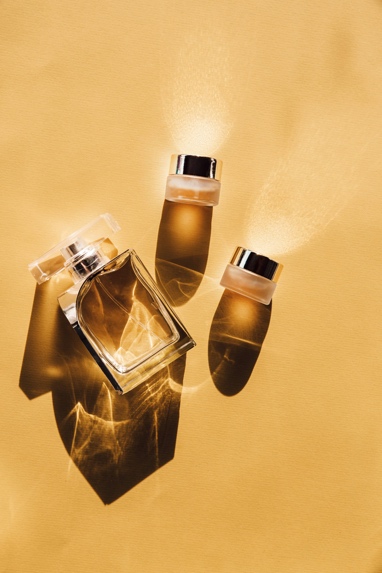

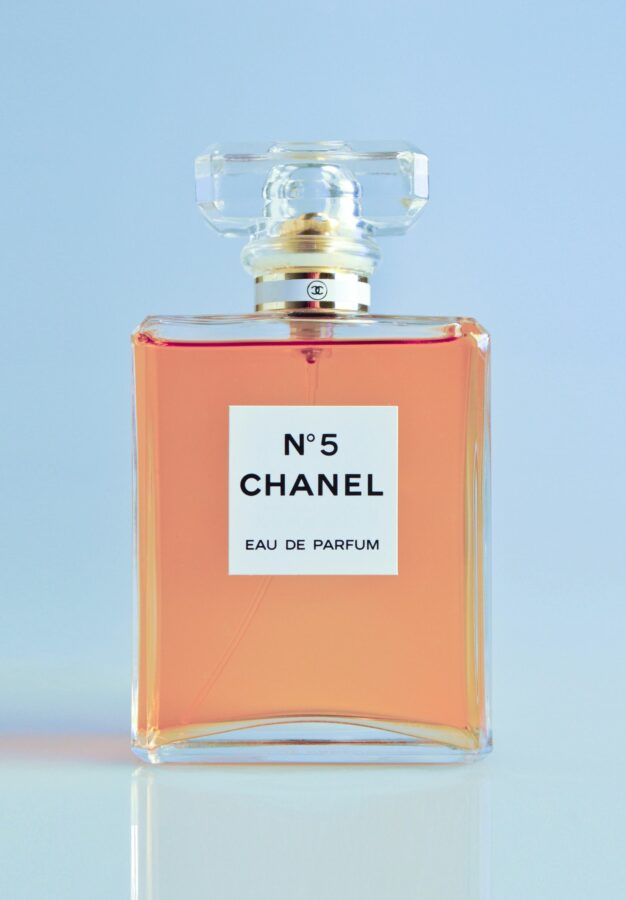
Luxury and sport may once have seemed unlikely companions – one rooted in exclusivity, heritage and rarity, the other in mass culture, fandom and accessibility. Yet in recent years, these two worlds have collided in striking ways. Luxury brands are embracing sport not just as sponsorship, but as a powerful cultural stage, such as the Tiffany & Co.’s jewels sparkling under the Super Bowl spotlight.
At the heart of this lies the central paradox of luxury: to be desired by all, but attainable by few. Sport, with its global reach and passionate audiences, offers the perfect arena for cultivating desire.
From Elite Sports to Mass Fandom
Historically, luxury brands aligned themselves with elite sports – polo, sailing, tennis, golf. These associations mirrored their own codes of prestige, tradition and exclusivity. Chanel’s support of the Oxford–Cambridge Boat Race exemplifies this long-standing formula: aligning with heritage-rich events that exude rarity.
But the tide is turning. As Benjamin Voyer wrote in Forbes, luxury brands are now venturing beyond these rarefied circles into mass sports, from football to Formula 1. By doing so, they can command the attention of millions while still maintaining an aspirational edge. This shift is not dilution but amplification – ensuring luxury continues to dominate the cultural conversation.
Athletes as Authentic Ambassadors
One reason sport has become irresistible to luxury is the authenticity athletes bring. Kyle Smith, the NFL’s first-ever fashion editor, describes it simply: “anything an athlete does is so genuine.” Unlike traditional brand ambassadors, athletes embody dedication, performance and individuality – qualities that resonate deeply with younger audiences.
This authenticity allows luxury to connect with fandoms it might otherwise never reach. The NFL’s embrace of fashion, or the ATP Tour’s decision to style its top players in Ralph Lauren and Ferragamo ahead of the US Open, shows how sport can be a gateway into new cultural spaces.
Crucially, the rise of female athletes is opening up even more possibilities. Charlotte Tilbury’s partnership with the F1 Academy is a prime example: by supporting an all-female racing series, the brand positions itself not only within sport, but at the intersection of empowerment, inclusivity and glamour. With 40% of Formula 1 fans now female, these moves reflect a cultural and commercial shift.
Case Studies: Where Luxury Meets Sport
Tennis – The New Golf
Tennis has become fashion’s sport of choice, often described as “the new golf” but with added cultural momentum. Global stars such as Alcaraz and Musetti are now ambassadors for Louis Vuitton Louis Vuitton and Bottega Veneta. For brands, the sport offers aspirational characters, glamorous locations and storylines that travel far beyond the court.
Football and the NFL – Mass Reach, Luxury Moments
The Super Bowl has become a luxury showcase in itself. When Lamar performed in Celine jeans and Jon Batiste’s Tiffany jewels were spotlighted on live broadcast, LVMH stole the fashion headlines. Football may be the ultimate mass sport, but these luxury moments remind fans of the aspirational lifestyle surrounding it.
Formula 1 – High-Octane Glamour
Formula 1 continues to attract luxury partnerships, not only for its association with speed and spectacle, but also for its ability to reinvent itself. Collaborations like Charlotte Tilbury’s support of female drivers highlight how brands can merge luxury with progressive values in a sport that commands a global stage.
Beyond Sponsorship – The Wellness Shift
Luxury’s engagement with sport isn’t confined to high-profile sponsorship’s. Increasingly, brands are leaning into wellness and lifestyle. Celine’s Pilates collection and luxury ski equipment lines reflect a broader trend: health, balance and longevity have become new markers of luxury living. By entering these spaces, luxury ensures relevance in consumers’ everyday routines while maintaining its aspirational aura.
Sophie Lacoste’s Fulsalp is redefining how HNWIs dress, leveraging the shift in focus of a lifestyle that prioritises wellness, with performance-driven pieces that transition seamlessly from slope to city. Fusalp understands that for today’s HNW customers, status is increasingly expressed through vitality and balance.
The Future of Luxury and Sport
Looking ahead, the convergence of sport and luxury is only set to deepen. Expect more emphasis on female athletes, values-driven partnerships and culturally authentic moments that cut through fandoms worldwide. For Gen Z and Gen Alpha, there is no contradiction in loving both sport and fashion; luxury brands that embrace this fluidity will continue to win.
The challenge will be balance: harnessing the mass reach of sport without sacrificing exclusivity. But if done well, sport offers luxury the most powerful stage of all – one where desire is universal, but access remains scarce.
In this new arena, luxury isn’t just adorning athletes or sponsoring events. It is weaving itself into the very fabric of global sporting culture. And in doing so, it reinforces the timeless truth of its appeal: desired by all, attainable by few.
Luxury and sport may once have seemed unlikely companions – one rooted in exclusivity, heritage and rarity, the other in mass culture, fandom and accessibility. Yet in recent years, these two worlds have collided in striking ways. Luxury brands are embracing sport not just as sponsorship, but as a powerful cultural stage, such as the Tiffany & Co.’s jewels sparkling under the Super Bowl spotlight.
At the heart of this lies the central paradox of luxury: to be desired by all, but attainable by few. Sport, with its global reach and passionate audiences, offers the perfect arena for cultivating desire.
From Elite Sports to Mass Fandom
Historically, luxury brands aligned themselves with elite sports – polo, sailing, tennis, golf. These associations mirrored their own codes of prestige, tradition and exclusivity. Chanel’s support of the Oxford–Cambridge Boat Race exemplifies this long-standing formula: aligning with heritage-rich events that exude rarity.
But the tide is turning. As Benjamin Voyer wrote in Forbes, luxury brands are now venturing beyond these rarefied circles into mass sports, from football to Formula 1. By doing so, they can command the attention of millions while still maintaining an aspirational edge. This shift is not dilution but amplification – ensuring luxury continues to dominate the cultural conversation.
Athletes as Authentic Ambassadors
One reason sport has become irresistible to luxury is the authenticity athletes bring. Kyle Smith, the NFL’s first-ever fashion editor, describes it simply: “anything an athlete does is so genuine.” Unlike traditional brand ambassadors, athletes embody dedication, performance and individuality – qualities that resonate deeply with younger audiences.
This authenticity allows luxury to connect with fandoms it might otherwise never reach. The NFL’s embrace of fashion, or the ATP Tour’s decision to style its top players in Ralph Lauren and Ferragamo ahead of the US Open, shows how sport can be a gateway into new cultural spaces.
Crucially, the rise of female athletes is opening up even more possibilities. Charlotte Tilbury’s partnership with the F1 Academy is a prime example: by supporting an all-female racing series, the brand positions itself not only within sport, but at the intersection of empowerment, inclusivity and glamour. With 40% of Formula 1 fans now female, these moves reflect a cultural and commercial shift.
Case Studies: Where Luxury Meets Sport
Tennis – The New Golf
Tennis has become fashion’s sport of choice, often described as “the new golf” but with added cultural momentum. Global stars such as Alcaraz and Musetti are now ambassadors for Louis Vuitton Louis Vuitton and Bottega Veneta. For brands, the sport offers aspirational characters, glamorous locations and storylines that travel far beyond the court.
Football and the NFL – Mass Reach, Luxury Moments
The Super Bowl has become a luxury showcase in itself. When Lamar performed in Celine jeans and Jon Batiste’s Tiffany jewels were spotlighted on live broadcast, LVMH stole the fashion headlines. Football may be the ultimate mass sport, but these luxury moments remind fans of the aspirational lifestyle surrounding it.
Formula 1 – High-Octane Glamour
Formula 1 continues to attract luxury partnerships, not only for its association with speed and spectacle, but also for its ability to reinvent itself. Collaborations like Charlotte Tilbury’s support of female drivers highlight how brands can merge luxury with progressive values in a sport that commands a global stage.
Beyond Sponsorship – The Wellness Shift
Luxury’s engagement with sport isn’t confined to high-profile sponsorship’s. Increasingly, brands are leaning into wellness and lifestyle. Celine’s Pilates collection and luxury ski equipment lines reflect a broader trend: health, balance and longevity have become new markers of luxury living. By entering these spaces, luxury ensures relevance in consumers’ everyday routines while maintaining its aspirational aura.
Sophie Lacoste’s Fulsalp is redefining how HNWIs dress, leveraging the shift in focus of a lifestyle that prioritises wellness, with performance-driven pieces that transition seamlessly from slope to city. Fusalp understands that for today’s HNW customers, status is increasingly expressed through vitality and balance.
The Future of Luxury and Sport
Looking ahead, the convergence of sport and luxury is only set to deepen. Expect more emphasis on female athletes, values-driven partnerships and culturally authentic moments that cut through fandoms worldwide. For Gen Z and Gen Alpha, there is no contradiction in loving both sport and fashion; luxury brands that embrace this fluidity will continue to win.
The challenge will be balance: harnessing the mass reach of sport without sacrificing exclusivity. But if done well, sport offers luxury the most powerful stage of all – one where desire is universal, but access remains scarce.
In this new arena, luxury isn’t just adorning athletes or sponsoring events. It is weaving itself into the very fabric of global sporting culture. And in doing so, it reinforces the timeless truth of its appeal: desired by all, attainable by few.
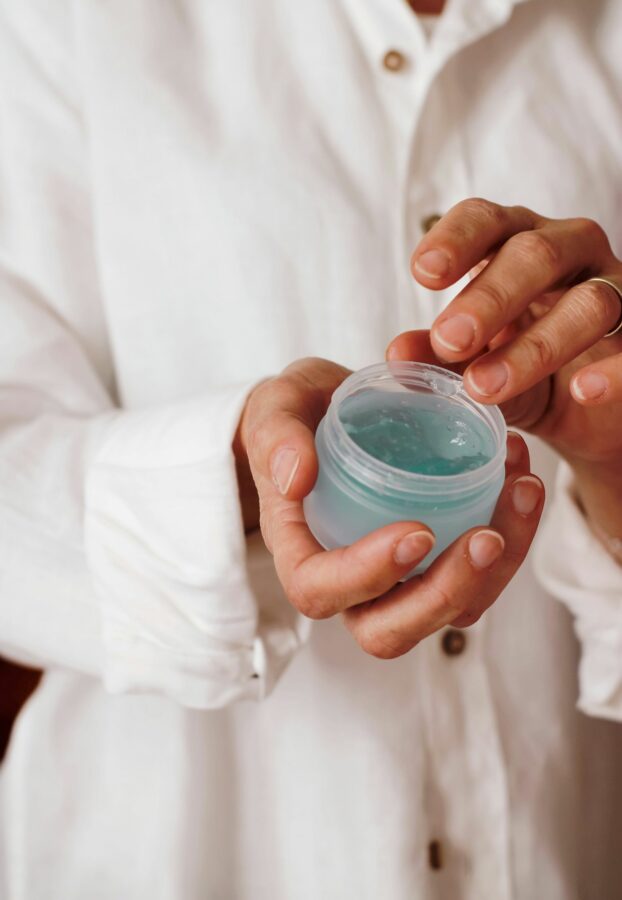
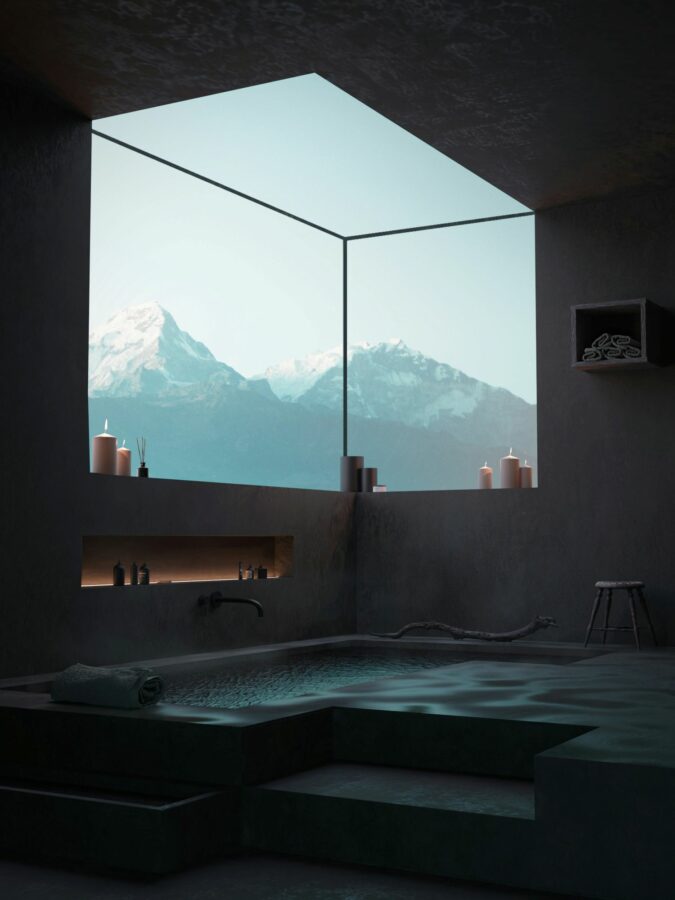
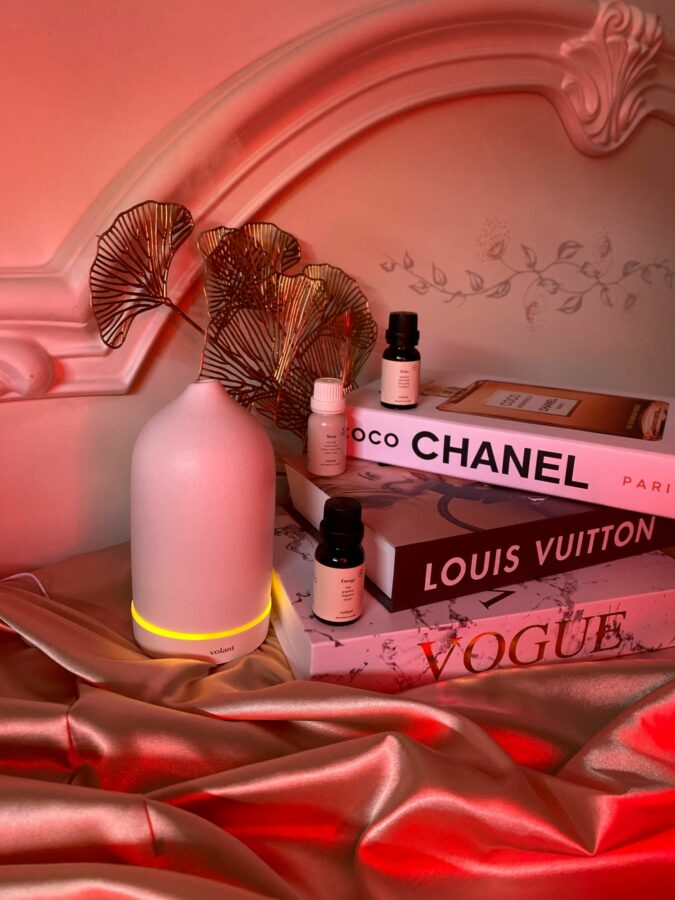
Glimmers began as brief, feel-good surprises and moments of joy planted amid the routine. As these micro-moments proved memorable and meaningful, they’ve evolved into full-scale trends: the personalisation of sensory luxury and immersive experiences becoming standard expectations in the luxury market.
Anya Hindmarch’s pop-up, for example, the Ice Cream Project, exemplifies WGSN’s concept of “glimmers” by turning tiny moments of joy into powerful brand experiences that offer both surprise and comfort, precisely what WGSN anticipates consumers crave. In the age of the glimmers, where celebrating “minor stones” takes precedence, Anya’s tactical use of sensory nostalgia delivers exactly the glimmer of human connection and joy that consumers value most.
Beyond the charm and creativity, it’s the exclusivity of the experience with limited edition flavours, seasonal openings and location within her curated Village that resonates deeply with today’s UHNWIs. For this audience, luxury is no longer about permanence or price tags, but access to rare occasions that few others can experience. Gen Z luxury consumers are gravitating towards these micro experiences as the new markers of status.
The activations success also intersects with what Vogue Business terms Gen Z’s demand for Chaotic Customisation. In their 2025 report, they highlight how this generation increasingly seeks playful, unpredictable ways to express individuality through personalisation and nostalgic throwbacks. Anya Hindmarch directly taps into this mindset. From handbags shaped like washing detergent boxes to clutches embossed with cereal logos it challenges traditional notions of luxury by injecting humour into high end design and create an emotional connection. Her Ice Cream Project doesn’t just sell a product, it invites consumers into a remix of everyday icons, reimagined with luxury-level craftsmanship. It reflects Gen Z’s desire for experiences that are hyper specific, aesthetically layered and emotionally resonant.
Anya Hindmarch’s Ice Cream Project
Anya Hindmarch is a British designer renowned for blending craftmanship with wit, creating high quality luxury accessories with a distinctly playful spirit. Her brand has long stood out for its ability to inject humour into the luxury space with handbags styled like crisp packets or slogans. Now firmly established as a seasonal favourite within their Village on Pont Street, Anya Hindmarch’s Ice Cream Project is back and once again rewriting the rules on what ice cream should be.
This exclusive activation isn’t your typical ice cream shop, instead it’s a curated edit of British pantry staples reimagined as ice cream, think Branston Pickle, Heinz Baked Beans, Coco Pops and Bird’s Custard, all churned into ice cream that are as conversation starting as they are delicious. Each flavour is beautifully packaged and strictly limited edition. More than a pop-up, the Ice Cream Project is fast becoming a London summer ritual.
Pop ups as the New Standard of Experiential Luxury
This summer’s pop ups across Europe reflect a significant evolution in luxury branding shifting from product centric to experience first strategies. Vogue Business highlights activations including Jacquemus opening a temporary boutique and beach takeover at Cala Jondal in Ibiza and Chanel’s St Tropez boutique opening for the season are examples of how brands now aim to surprise and delight through highly curated experiences. These moments are the essence of what WGSN defines as “glimmers” being joyful experiences that embed emotional meaning into consumer brand interactions. Gen Z in particular, is seeking these feel-good moments as emotional refreshers, where luxury is defined more by access and shareable impact.
Insights from Cannes Lions 2025 show how top luxury brands are adapting to this emotional economy. Activations like Moncler’s “City of Genius”, a multisensory urban takeover and Louis Vuitton’s 5th Avenue Trunks demonstrate that even large-scale spectacles can deliver intimacy and narrative richness when executed with creativity. Luxury activations are morphing into urban-scale spectacles, where brand resonance leverages iconic venues and mass impact. This is attracting Gen Zs as they increasingly prefer immersive experiences that combine high production with authentic storytelling and cultural relevance.
In today’s luxury landscape, “glimmers” have become key to engaging Gen Z consumers, who prioritise emotionally resonant, shareable experiences over traditional status symbols. Whether through Anya Hindmarch’s nostalgic Ice Cream Project or immersive brand activations like luxury brand beach takeovers, successful luxury strategies now centre on creativity, personalisation, and cultural relevance. As Cannes Lions 2025 highlighted, the most impactful events combine storytelling with sensory richness, proving that for Gen Z, true luxury lies not in permanence but in the power of a fleeting, memorable moment.
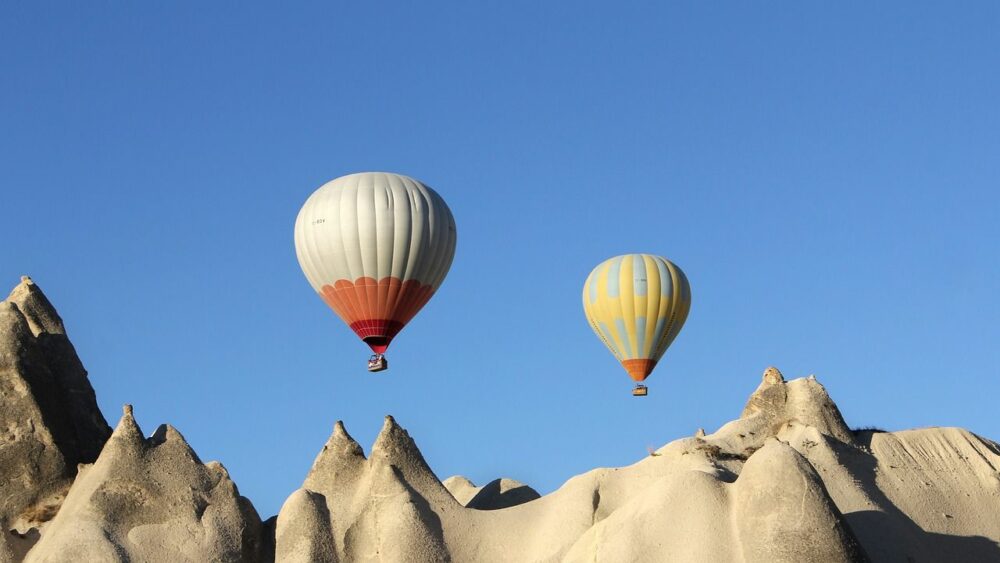
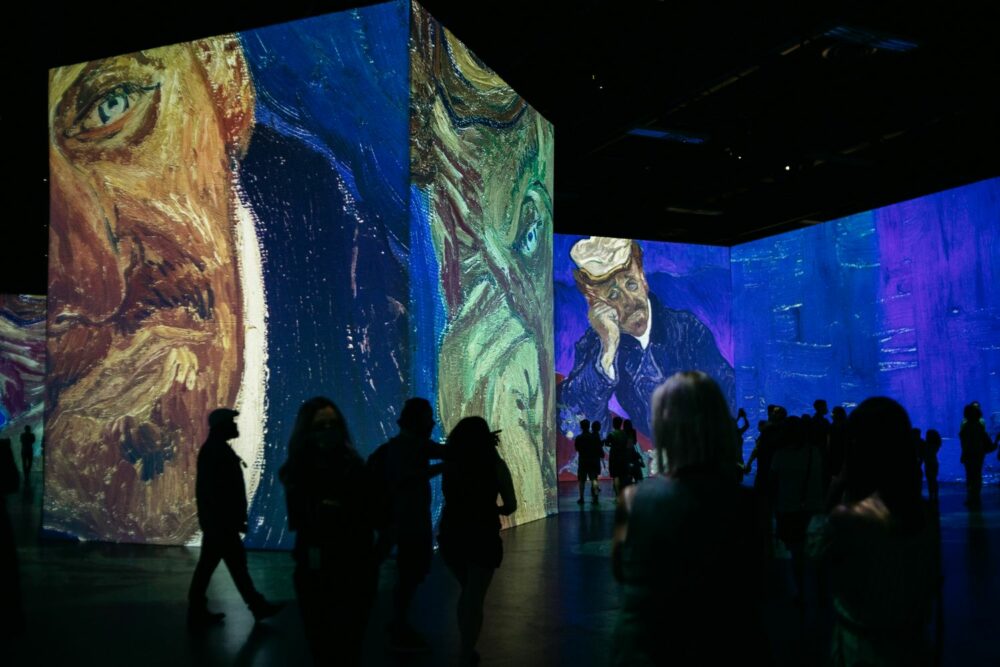

Luxury and sport may once have seemed unlikely companions – one rooted in exclusivity, heritage and rarity, the other in mass culture, fandom and accessibility. Yet in recent years, these two worlds have collided in striking ways. Luxury brands are embracing sport not just as sponsorship, but as a powerful cultural stage, such as the Tiffany & Co.’s jewels sparkling under the Super Bowl spotlight.
At the heart of this lies the central paradox of luxury: to be desired by all, but attainable by few. Sport, with its global reach and passionate audiences, offers the perfect arena for cultivating desire.
From Elite Sports to Mass Fandom
Historically, luxury brands aligned themselves with elite sports – polo, sailing, tennis, golf. These associations mirrored their own codes of prestige, tradition and exclusivity. Chanel’s support of the Oxford–Cambridge Boat Race exemplifies this long-standing formula: aligning with heritage-rich events that exude rarity.
But the tide is turning. As Benjamin Voyer wrote in Forbes, luxury brands are now venturing beyond these rarefied circles into mass sports, from football to Formula 1. By doing so, they can command the attention of millions while still maintaining an aspirational edge. This shift is not dilution but amplification – ensuring luxury continues to dominate the cultural conversation.
Athletes as Authentic Ambassadors
One reason sport has become irresistible to luxury is the authenticity athletes bring. Kyle Smith, the NFL’s first-ever fashion editor, describes it simply: “anything an athlete does is so genuine.” Unlike traditional brand ambassadors, athletes embody dedication, performance and individuality – qualities that resonate deeply with younger audiences.
This authenticity allows luxury to connect with fandoms it might otherwise never reach. The NFL’s embrace of fashion, or the ATP Tour’s decision to style its top players in Ralph Lauren and Ferragamo ahead of the US Open, shows how sport can be a gateway into new cultural spaces.
Crucially, the rise of female athletes is opening up even more possibilities. Charlotte Tilbury’s partnership with the F1 Academy is a prime example: by supporting an all-female racing series, the brand positions itself not only within sport, but at the intersection of empowerment, inclusivity and glamour. With 40% of Formula 1 fans now female, these moves reflect a cultural and commercial shift.
Case Studies: Where Luxury Meets Sport
Tennis – The New Golf
Tennis has become fashion’s sport of choice, often described as “the new golf” but with added cultural momentum. Global stars such as Alcaraz and Musetti are now ambassadors for Louis Vuitton Louis Vuitton and Bottega Veneta. For brands, the sport offers aspirational characters, glamorous locations and storylines that travel far beyond the court.
Football and the NFL – Mass Reach, Luxury Moments
The Super Bowl has become a luxury showcase in itself. When Lamar performed in Celine jeans and Jon Batiste’s Tiffany jewels were spotlighted on live broadcast, LVMH stole the fashion headlines. Football may be the ultimate mass sport, but these luxury moments remind fans of the aspirational lifestyle surrounding it.
Formula 1 – High-Octane Glamour
Formula 1 continues to attract luxury partnerships, not only for its association with speed and spectacle, but also for its ability to reinvent itself. Collaborations like Charlotte Tilbury’s support of female drivers highlight how brands can merge luxury with progressive values in a sport that commands a global stage.
Beyond Sponsorship – The Wellness Shift
Luxury’s engagement with sport isn’t confined to high-profile sponsorship’s. Increasingly, brands are leaning into wellness and lifestyle. Celine’s Pilates collection and luxury ski equipment lines reflect a broader trend: health, balance and longevity have become new markers of luxury living. By entering these spaces, luxury ensures relevance in consumers’ everyday routines while maintaining its aspirational aura.
Sophie Lacoste’s Fulsalp is redefining how HNWIs dress, leveraging the shift in focus of a lifestyle that prioritises wellness, with performance-driven pieces that transition seamlessly from slope to city. Fusalp understands that for today’s HNW customers, status is increasingly expressed through vitality and balance.
The Future of Luxury and Sport
Looking ahead, the convergence of sport and luxury is only set to deepen. Expect more emphasis on female athletes, values-driven partnerships and culturally authentic moments that cut through fandoms worldwide. For Gen Z and Gen Alpha, there is no contradiction in loving both sport and fashion; luxury brands that embrace this fluidity will continue to win.
The challenge will be balance: harnessing the mass reach of sport without sacrificing exclusivity. But if done well, sport offers luxury the most powerful stage of all – one where desire is universal, but access remains scarce.
In this new arena, luxury isn’t just adorning athletes or sponsoring events. It is weaving itself into the very fabric of global sporting culture. And in doing so, it reinforces the timeless truth of its appeal: desired by all, attainable by few.
Luxury and sport may once have seemed unlikely companions – one rooted in exclusivity, heritage and rarity, the other in mass culture, fandom and accessibility. Yet in recent years, these two worlds have collided in striking ways. Luxury brands are embracing sport not just as sponsorship, but as a powerful cultural stage, such as the Tiffany & Co.’s jewels sparkling under the Super Bowl spotlight.
At the heart of this lies the central paradox of luxury: to be desired by all, but attainable by few. Sport, with its global reach and passionate audiences, offers the perfect arena for cultivating desire.
From Elite Sports to Mass Fandom
Historically, luxury brands aligned themselves with elite sports – polo, sailing, tennis, golf. These associations mirrored their own codes of prestige, tradition and exclusivity. Chanel’s support of the Oxford–Cambridge Boat Race exemplifies this long-standing formula: aligning with heritage-rich events that exude rarity.
But the tide is turning. As Benjamin Voyer wrote in Forbes, luxury brands are now venturing beyond these rarefied circles into mass sports, from football to Formula 1. By doing so, they can command the attention of millions while still maintaining an aspirational edge. This shift is not dilution but amplification – ensuring luxury continues to dominate the cultural conversation.
Athletes as Authentic Ambassadors
One reason sport has become irresistible to luxury is the authenticity athletes bring. Kyle Smith, the NFL’s first-ever fashion editor, describes it simply: “anything an athlete does is so genuine.” Unlike traditional brand ambassadors, athletes embody dedication, performance and individuality – qualities that resonate deeply with younger audiences.
This authenticity allows luxury to connect with fandoms it might otherwise never reach. The NFL’s embrace of fashion, or the ATP Tour’s decision to style its top players in Ralph Lauren and Ferragamo ahead of the US Open, shows how sport can be a gateway into new cultural spaces.
Crucially, the rise of female athletes is opening up even more possibilities. Charlotte Tilbury’s partnership with the F1 Academy is a prime example: by supporting an all-female racing series, the brand positions itself not only within sport, but at the intersection of empowerment, inclusivity and glamour. With 40% of Formula 1 fans now female, these moves reflect a cultural and commercial shift.
Case Studies: Where Luxury Meets Sport
Tennis – The New Golf
Tennis has become fashion’s sport of choice, often described as “the new golf” but with added cultural momentum. Global stars such as Alcaraz and Musetti are now ambassadors for Louis Vuitton Louis Vuitton and Bottega Veneta. For brands, the sport offers aspirational characters, glamorous locations and storylines that travel far beyond the court.
Football and the NFL – Mass Reach, Luxury Moments
The Super Bowl has become a luxury showcase in itself. When Lamar performed in Celine jeans and Jon Batiste’s Tiffany jewels were spotlighted on live broadcast, LVMH stole the fashion headlines. Football may be the ultimate mass sport, but these luxury moments remind fans of the aspirational lifestyle surrounding it.
Formula 1 – High-Octane Glamour
Formula 1 continues to attract luxury partnerships, not only for its association with speed and spectacle, but also for its ability to reinvent itself. Collaborations like Charlotte Tilbury’s support of female drivers highlight how brands can merge luxury with progressive values in a sport that commands a global stage.
Beyond Sponsorship – The Wellness Shift
Luxury’s engagement with sport isn’t confined to high-profile sponsorship’s. Increasingly, brands are leaning into wellness and lifestyle. Celine’s Pilates collection and luxury ski equipment lines reflect a broader trend: health, balance and longevity have become new markers of luxury living. By entering these spaces, luxury ensures relevance in consumers’ everyday routines while maintaining its aspirational aura.
Sophie Lacoste’s Fulsalp is redefining how HNWIs dress, leveraging the shift in focus of a lifestyle that prioritises wellness, with performance-driven pieces that transition seamlessly from slope to city. Fusalp understands that for today’s HNW customers, status is increasingly expressed through vitality and balance.
The Future of Luxury and Sport
Looking ahead, the convergence of sport and luxury is only set to deepen. Expect more emphasis on female athletes, values-driven partnerships and culturally authentic moments that cut through fandoms worldwide. For Gen Z and Gen Alpha, there is no contradiction in loving both sport and fashion; luxury brands that embrace this fluidity will continue to win.
The challenge will be balance: harnessing the mass reach of sport without sacrificing exclusivity. But if done well, sport offers luxury the most powerful stage of all – one where desire is universal, but access remains scarce.
In this new arena, luxury isn’t just adorning athletes or sponsoring events. It is weaving itself into the very fabric of global sporting culture. And in doing so, it reinforces the timeless truth of its appeal: desired by all, attainable by few.
Luxury and sport may once have seemed unlikely companions – one rooted in exclusivity, heritage and rarity, the other in mass culture, fandom and accessibility. Yet in recent years, these two worlds have collided in striking ways. Luxury brands are embracing sport not just as sponsorship, but as a powerful cultural stage, such as the Tiffany & Co.’s jewels sparkling under the Super Bowl spotlight.
At the heart of this lies the central paradox of luxury: to be desired by all, but attainable by few. Sport, with its global reach and passionate audiences, offers the perfect arena for cultivating desire.
From Elite Sports to Mass Fandom
Historically, luxury brands aligned themselves with elite sports – polo, sailing, tennis, golf. These associations mirrored their own codes of prestige, tradition and exclusivity. Chanel’s support of the Oxford–Cambridge Boat Race exemplifies this long-standing formula: aligning with heritage-rich events that exude rarity.
But the tide is turning. As Benjamin Voyer wrote in Forbes, luxury brands are now venturing beyond these rarefied circles into mass sports, from football to Formula 1. By doing so, they can command the attention of millions while still maintaining an aspirational edge. This shift is not dilution but amplification – ensuring luxury continues to dominate the cultural conversation.
Athletes as Authentic Ambassadors
One reason sport has become irresistible to luxury is the authenticity athletes bring. Kyle Smith, the NFL’s first-ever fashion editor, describes it simply: “anything an athlete does is so genuine.” Unlike traditional brand ambassadors, athletes embody dedication, performance and individuality – qualities that resonate deeply with younger audiences.
This authenticity allows luxury to connect with fandoms it might otherwise never reach. The NFL’s embrace of fashion, or the ATP Tour’s decision to style its top players in Ralph Lauren and Ferragamo ahead of the US Open, shows how sport can be a gateway into new cultural spaces.
Crucially, the rise of female athletes is opening up even more possibilities. Charlotte Tilbury’s partnership with the F1 Academy is a prime example: by supporting an all-female racing series, the brand positions itself not only within sport, but at the intersection of empowerment, inclusivity and glamour. With 40% of Formula 1 fans now female, these moves reflect a cultural and commercial shift.
Case Studies: Where Luxury Meets Sport
Tennis – The New Golf
Tennis has become fashion’s sport of choice, often described as “the new golf” but with added cultural momentum. Global stars such as Alcaraz and Musetti are now ambassadors for Louis Vuitton Louis Vuitton and Bottega Veneta. For brands, the sport offers aspirational characters, glamorous locations and storylines that travel far beyond the court.
Football and the NFL – Mass Reach, Luxury Moments
The Super Bowl has become a luxury showcase in itself. When Lamar performed in Celine jeans and Jon Batiste’s Tiffany jewels were spotlighted on live broadcast, LVMH stole the fashion headlines. Football may be the ultimate mass sport, but these luxury moments remind fans of the aspirational lifestyle surrounding it.
Formula 1 – High-Octane Glamour
Formula 1 continues to attract luxury partnerships, not only for its association with speed and spectacle, but also for its ability to reinvent itself. Collaborations like Charlotte Tilbury’s support of female drivers highlight how brands can merge luxury with progressive values in a sport that commands a global stage.
Beyond Sponsorship – The Wellness Shift
Luxury’s engagement with sport isn’t confined to high-profile sponsorship’s. Increasingly, brands are leaning into wellness and lifestyle. Celine’s Pilates collection and luxury ski equipment lines reflect a broader trend: health, balance and longevity have become new markers of luxury living. By entering these spaces, luxury ensures relevance in consumers’ everyday routines while maintaining its aspirational aura.
Sophie Lacoste’s Fulsalp is redefining how HNWIs dress, leveraging the shift in focus of a lifestyle that prioritises wellness, with performance-driven pieces that transition seamlessly from slope to city. Fusalp understands that for today’s HNW customers, status is increasingly expressed through vitality and balance.
The Future of Luxury and Sport
Looking ahead, the convergence of sport and luxury is only set to deepen. Expect more emphasis on female athletes, values-driven partnerships and culturally authentic moments that cut through fandoms worldwide. For Gen Z and Gen Alpha, there is no contradiction in loving both sport and fashion; luxury brands that embrace this fluidity will continue to win.
The challenge will be balance: harnessing the mass reach of sport without sacrificing exclusivity. But if done well, sport offers luxury the most powerful stage of all – one where desire is universal, but access remains scarce.
In this new arena, luxury isn’t just adorning athletes or sponsoring events. It is weaving itself into the very fabric of global sporting culture. And in doing so, it reinforces the timeless truth of its appeal: desired by all, attainable by few.


